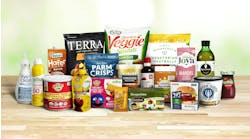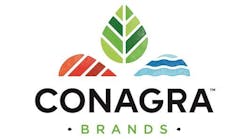The erosion of trust between consumers and food and beverage producing companies isn't an illusion, and it is slowly increasing. Melissa Kinch, a partner with Ketchum, described the rift as being a product of the American people's concern with long term health issues such as cancer, diabetes, and heart health as a result of the products that companies are producing.
"There is a major credibility gap between what the food industry says and what consumers hear," Kinch said. "When there's a product that doesn't share much information, the consumers are filling it in with the worst case scenario."
While some of the hype is true, and some products may have those effects on the consumer, when it comes down to it there are many factors backing up the truth that consumers’ concerns hold no water. As a result, Kinch was speaking out to food and beverage companies to encourage them to make changes to help boost the food and beverage industry esteem.
"[Companies need to] communicate with the American people and gain the people's permission for the food supply chain to operate freely," Kinch said.
Shockingly, doing this may not be as difficult or complicated as one might think.
A lack of information is when the consumers become suspicious of companies and think that they're trying to hide something. To rid the consumers from those negative thoughts, Kinch encouraged the companies to share as many details about their food or beverage product as they possibly can on the label and in various ways. Either way, information is key.
Thad Neal, from Junction Solutions, agreed wholeheartedly.
"Transparency equals winning more customers," Neal said. "As more organizations are able to provide this information to customers, if [your company can't do the same], you will be on the outside looking in."
He, on the other hand, encouraged more technological ways for consumers to get a hold of the information that they desire. He suggested that companies make apps on phones or tablets that can scan an item and trace it back to exactly where and how the product was produced.
"We're at the point where [food and beverage companies need to be able to provide] the cow's name, what the cow ate for breakfast, and where the cow came from," Neal said.
As companies research and develop the solutions that Neal and Kinch advocated, it is clear that without this step into the future consumers will continue being picky with their food choices as well as having a negative attitude towards food and beverage products.
Learn more about the solutions by listening to the webinar Thad and Melissa took part in on February 27: http://www.foodprocessing.com/webcasts/transparency-as-a-growth-engine/

